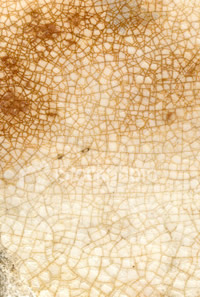Concrete, as a material for countertops, is not the right choice for all homeowners.
Concrete is a very durable material, which is why it is used to build roads and although, as long as it is properly created, it will outlast most homes, it will stain and can be scratched. In a kitchen environment, an unsealed concrete countertop can be easily damaged by many of the common products found in all kitchens; citrus juices, vinegars and wine. These three products will leave unsealed concrete discolored or in the worst case they can degrade the top layer of the concrete leaving the surface rough.
In order to keep your kitchen concrete countertop in good condition you need to regularly apply sealers and wax. Many homeowners are not prepared for the ongoing maintenance requirements of concrete countertops and while sealers will help to resist stains, they do not stop them from occurring. Concrete epoxy sealers are generally considered stain proof but they can be scratched and you cannot set a hot pot on an epoxy sealer. Secondarily, an epoxy sealer creates the appearance that looks as if the concrete countertop has been coated in plastic. Most homeowners do not appreciate this look.
Before choosing concrete for your countertop you should compare its attributes and its repair ability against other countertop materials, as no countertop material is perfect!
Cracking and crazing

Figure 2 - Crazed concrete
There's an old saying: "If it ain't cracked, it ain't concrete." Some crazing – small surface cracks are very common.
There is a difference between cracks in the concrete, which you do not want and crazing, as shown in Figure 2, which adds patterns to the surface of the concrete and gives it an antique appearance. Many designers actually try to create crazing in the concrete as they believe the crazed appearance is desirable and it has no effect on the strength of the concrete or its longevity.
If your concrete countertop does have crazing that was not designed into it, nor is it desired you can usually remove the crazing with additional grinding and polishing.
Large cracks, which weaken the concrete, are generally an indication of an improper concrete mix or problems associated with the curing of the concrete countertop.
Countertop shapes
We highly recommend that you build your first concrete countertop as a rectangular structure, the most common of all countertops. However, concrete, unlike natural stones such as granite or marble, can be molded into almost any curve and physical shape you can dream up.
The more complex the shape, the more complex the mold and the more complex the mold the harder it is to get the rebar and wire mesh positioned properly and actually releasing the cured concrete countertop from the mold gets progressively more difficult as you create curves within the mold itself.
Countertop thickness
Kitchens
Most countertops made of the more common materials are 1 1/2 inches thick. Considering that kitchen base cabinets are generally 34 1/2 inches high the top of the countertop will be 36 inches from the floor.
Note: In some cases base cabinets are not placed on the kitchen floor, they are placed on the sub-floor and the finished flooring butts up against the cabinets. This is done to save money on the finished flooring. In this case, the finished height of the top of the countertop from the top of the finished flooring will be lower than 36 inches.
Concrete countertops are generally much thicker than countertops made of common countertop materials at least 2 1/2 inches thick. There are a few reasons for having a thicker concrete countertop:
- The thicker concrete allows for items such as cutting boards and inlays to be placed into the concrete without reducing the overall strength of the concrete countertop.
- The thicker concrete allows recessed areas for the integral construction of items such as drain boards and soap dishes.
A 2 1/2 inch concrete countertop sitting on a 3/4 inch piece of plywood sitting on a 34 1/2 inch base cabinet will place the countertop at a height of 37 3/4 inches from the finished floor. Some homeowners may find that a 37 3/4 inch countertop height is not comfortable for cooking.
We highly recommend that before you commit to building your concrete countertop that you place a piece of plywood on top of your current countertop raised to a height of 37 3/4 inches from the floor and see if the additional height will be a problem. If the 37 3/4 inch height is too high, you can lower the base cabinets, in most cases by trimming the toe kick at the base of the cabinets. However, if you lower the cabinets, you will no longer be able to place dishwashers, or bar style refrigerators below the countertop, as most require a minimum cabinet height of 34 1/2 inches.
Note: Many European dishwashers and refrigerators are shorter than North American models and may easily fit in cabinets that have been shortened to allow for a thicker concrete countertop.
Bathrooms
The height of the countertop in a bathroom is substantially different than the height in a kitchen. Bathroom countertops vary in height from 32 to 36 inches from the finished floor. In a bathroom you have the ability to be more creative with the positioning of the countertop and it does not have to sit on a vanity, it can be supported with steel brackets leaving an open space under the countertop. An open space works very well if you are creating an accessible bathroom.
Continued - Concrete countertop depth
How to Make Concrete Countertops - Index
